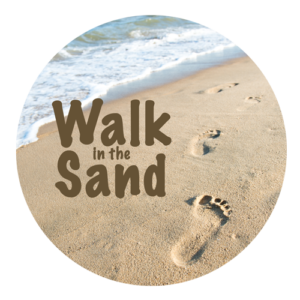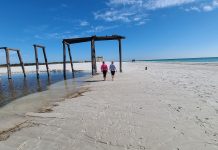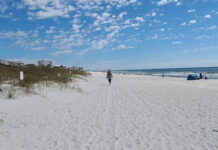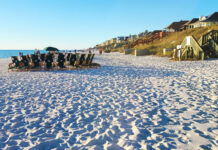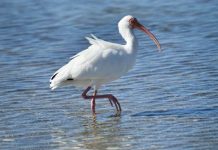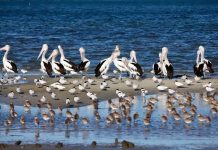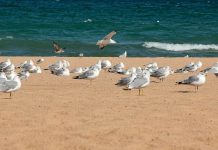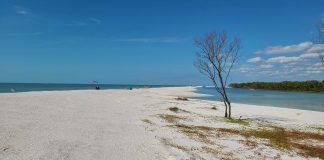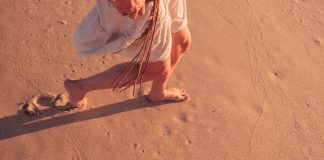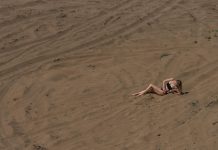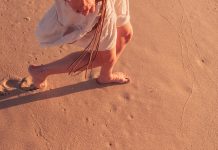There’s something magical about strolling along the shoreline, waves lapping at my feet, and spotting a tall, graceful bird wading in the shallows. For me, these long-legged beauties including herons, egrets, bitterns, ibises are as much a part of the beach experience as the salty breeze and the sparkle of seashells in the sand. They bring an elegance to the coast, moving with the kind of poise you’d expect on a runway, not a muddy estuary.
The Elegant Herons

One of my favorite beach moments is catching sight of a Great Blue Heron. There’s no mistaking it with its long, sinuous neck and bluish-gray plumage make it a true showstopper. I love watching it freeze like a statue, eyes locked on some unsuspecting fish before striking with lightning speed. Early mornings or evenings, when the light is soft, are the best times to spot these majestic birds along estuaries and tidal flats.
The Great Egrets

The Great Egret, with its dazzling white feathers and yellow bill, is another star of the coast. I love seeing them with those wispy, ornamental plumes that once made them a target for feather hunters. They look like they are dressed for the fanciest beach gala!
Bitterns: The Masters of Camouflage

Bitterns are the beachcomber’s treasure – rare, secretive, and oh-so-exciting to spot. These compact, streaky herons blend perfectly into the reeds and grasses, making them a challenge to find. Last spring, on a quiet stretch of marshy coastline, I caught sight of an American Bittern slowly swaying like the reeds around it, trying to blend in. You have to pay attention and look hard to spot these beauties.
The Least Bittern, true to its name, is tiny but no less thrilling to find. With its delicate frame and warm buffy tones, it’s like the hidden gem of coastal birdwatching. I’ve learned that patience is key with these shy creatures, and when you finally spot one, it feels like you’ve won the beachcomber’s lottery.
The Charismatic Ibises

Ibises are the social butterflies of the wading bird world, often seen foraging in groups, their long, curved bills probing the mud for crustaceans and insects. The White Ibis, with its snow-white feathers and bright red face, is a common sight on Gulf Coast beaches and salt marshes.
If you are in a marshier area along the coast, you might spot the Glossy Ibis, with its shimmering plumage of deep reds and greens. On sunny days, they look like coastal jewels, striding gracefully through the wetlands. Late summer and fall, when their populations swell during migration, is the perfect time to see them along the Atlantic and Gulf coasts.
Flamingo: A Wetland Specialist

Flamingos are not often found on the beaches accept in specific locations such as Aruba. They are considered wetland birds, typically found thriving inland or in coastal lagoons, not the open sea. Their habitat overlaps with marine ecosystems in some regions, but their reliance on brackish and hypersaline environments such as lakes, lagoons, and mudflats makes these a more ideal spot.
Seasonal Spectacles
While these birds can often be seen year-round, the best times for wading bird watching are during migration seasons, spring and fall, when the coastal wetlands come alive with activity. Breeding season in late spring is another highlight, as many species sport vibrant plumage and gather in colonies.
Some of my favorite spots for birding include the marshes of Florida’s Gulf Coast, the tidal flats of the Outer Banks in North Carolina, and the mangrove-lined shores of Texas. On the West Coast, places like California’s Bolsa Chica Ecological Reserve offer breathtaking views of egrets and herons against a backdrop of the Pacific.
A Joyful Encounter Every Time
There’s a sense of wonder every time I encounter one of these birds, whether it’s a Snowy Egret daintily stepping through the surf, its golden feet glowing in the morning sun, or a Tricolored Heron, its slate-blue and chestnut feathers a striking contrast to the pale sands. These birds aren’t just part of the scenery, they are the beach’s storytellers, weaving the rhythms of the tides into their graceful movements.
So, next time you’re at the beach, keep an eye out. Look beyond the waves and the sandcastles, and you might just catch a glimpse of one of these elegant waders, turning the shoreline into their stage. And if you’re like me, you’ll find yourself enchanted, your day made brighter by their presence.
